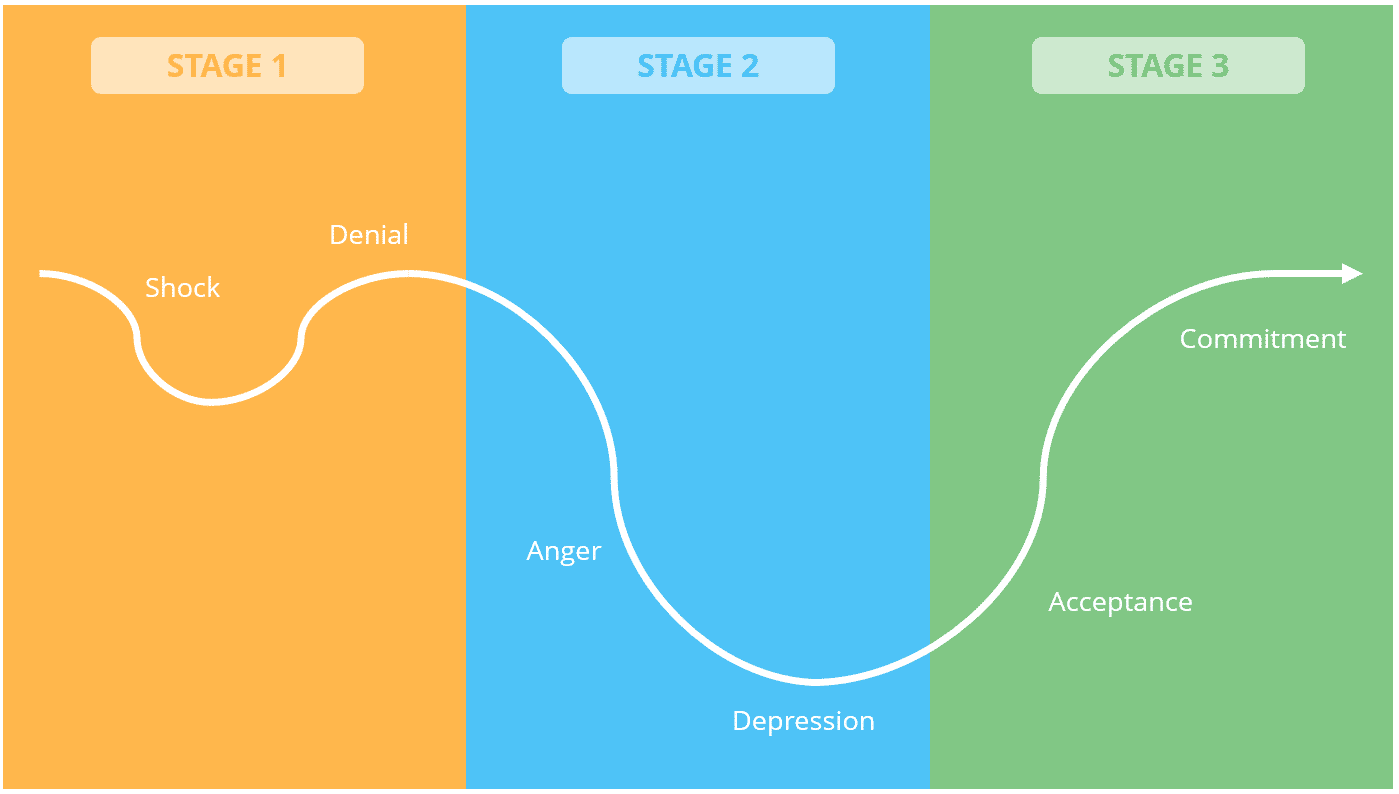Change Management - Emotions in change
- Guides
- Change Management
- Emotions in change
Change means moving from the known into the unknown, and that creates uncertainty and fear. Sometimes that fear is unfounded, but often it is not.
Many organisational changes result in loss. People have to let go of systems and processes that they were comfortable with, people have to change location, people are moved into different and possibly unfamiliar roles, and in the case of many restructures, many roles are made redundant.
When a change involves significant loss, it can have a profound emotional impact on people.
The Change Curve
The Change Curve is based on a model originally developed in the 1960s by Elisabeth Kubler-Ross to explain the grieving process - known as the Five Stages of Grief. The Change Curve helps to understand people's reactions to significant change.
The Change Curve describes the range of emotions that people tend to experience in response to significant change. These emotions are grouped into transitional stages, as demonstrated below..

Stage 1: Shock and denial
The first reaction to major change is often shock. People struggle to process it and you may hear reactions such as, “I don’t believe it”, “Why does this have to happen?”, “Everything is fine the way it is”. This phase is usually short-lived but can result in a temporary slow down and loss of productivity as people process the information.
After the initial shock, it is common for people to experience denial. In the denial phase people tend to convince themselves that the change won't actually happen or if it does, that it's not going to affect them. They carry on as before and may avoid taking part in the change.
To help people through this stage, communication with an emphasis on building change readiness is key.
Stage 2: Anger and depression
After the initial shock and denial, anger is often the next phase. People can feel frustrated by the lack of control - they don't want to change but they are powerless to stop it. In this phase it's common for people to question the motives for the change and view the change with suspicion and scepticism.
After the anger starts to wear off and people resign themselves to the fact that the change is really happening, people's moods can drop. As the impacts of the change become real, fear and self-doubt creep in. Low morale and performance can be expected during this phase.
To help people through this stage, they need to be able to express their feelings and be reassured that they will be supported through the change
Stage 3: Acceptance and commitment
As people accept that change is inevitable, they being to work with the changes rather than against them. They may start to focus on some of the positive aspects of the change.
As people continue to work on the change, the change is cemented and gradually becomes the new reality.
In this stage you want to reinforce the positive feelings about the change by recognising team efforts and celebrating achievements
Helpful tip
It's important to remember that everyone has different reactions to change, and will move through each stage at different speeds.
Some people may spend a lot of time in the initial stages (particularly if the change involves significant loss) whereas others may move through the stages quite quickly.
Learn more